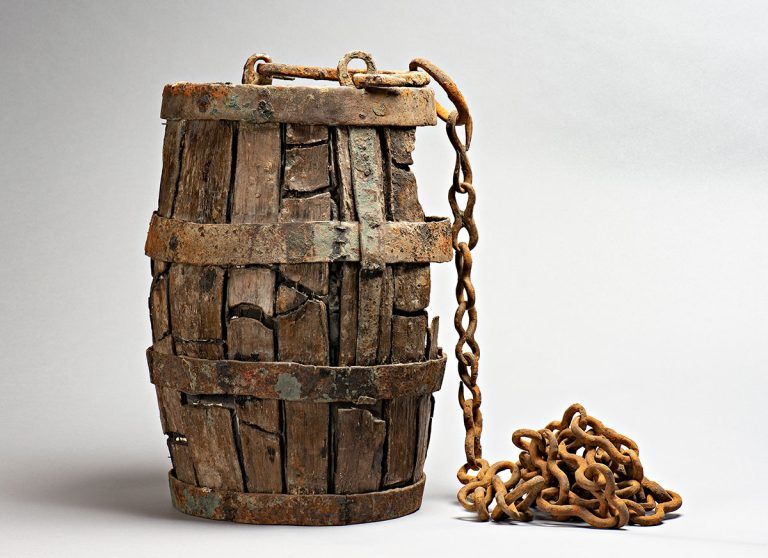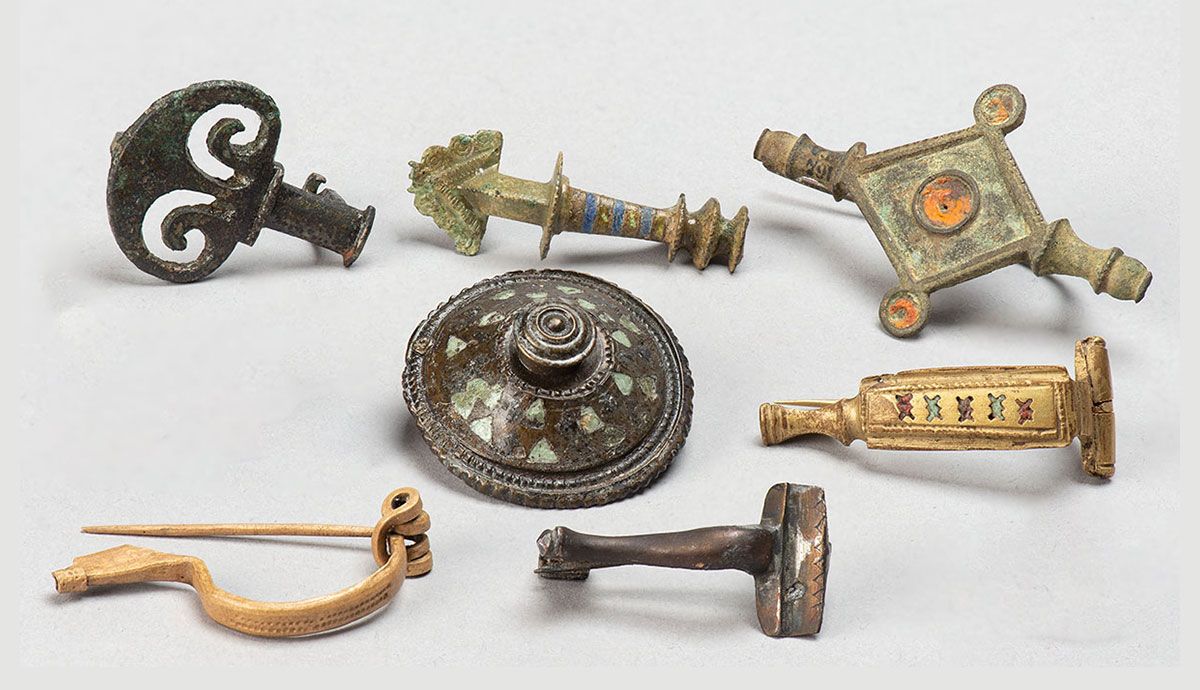Small exhibition
On display until 31 October 2024
One hundred objects from a Roman frontier fort
The Roman fort at Vechten, in the province of Utrecht, is one of the largest yet also the least known forts on the Roman frontier (limes) in the Netherlands. The National Museum of Antiquities has been involved in archaeological research in Vechten for almost two centuries. Many finds from Vechten have been added to the collection in recent years. One hundred extraordinary objects have been selected for this exhibition, including several unique helmets, a mask, splendid pottery, and shoe-soles of all shapes and sizes.
- Finds from Fort Vechten is on display in the exhibition area next to the permanent exhibition Archaeology of the Netherlands, on the second floor of the museum.
Finds and finders
People have been excavating Roman-era objects at Fort Vechten for almost two hundred years. Many of them are now in the collection of the National Museum of Antiquities. This exhibition not only focuses on the objects and their finding place, but also on the people who found them.
Soldiers and archaeologists
In the nineteenth century, many objects were collected by the Dutch army during the construction of the water defence line fort at Vechten. They include two unique miniature limestone altars, a complete sword, a dagger, a fitting belonging to a Roman army officer, and two beautiful carriage fittings. In the early twentieth century, the National Museum of Antiquities carried out excavations at Fort Vechten. The finds included a silver-plated horse bridle and a wooden bucket with a chain to draw water from a well. The archaeologists also found a near-complete bowl of terra sigillata pottery.
Roadworks
In the 1970s, the A12 at Vechten was widened. During the works, private treasure-hunters collected a large number of Roman artefacts. Some of these collections have entered the museum’s collection in recent years. There are tens of thousands of objects in total, ranging from pottery shards to unusual metal finds.
Highlights: helmets and a mask
The highlights of the collection include three beautifully decorated Roman helmets and a mask. Other special finds include wooden objects, such as frames for glass windows, combs, a label for labelling goods, and a writing tablet on which an address has been scratched. As wood usually decays in the soil, these objects are rare. The large numbers of decorated styli, shards of splendid terra sigillata pottery, and all kinds of shoe-soles indicate that Vechten must have been one of the most important places on the Roman frontier in the Netherlands.
Exhibition booklet
There is a booklet to accompany the exhibition, offering a unique glimpse into the everyday life of Roman Vechten through three hundred finds.
- The booklet, Vondsten uit Fort Vechten (96 pages, full colour, in Dutch ), will be on sale for €12.50 in the museum shop and webshop from 1 June.
This publication was made possible by a contribution from the Co Sloof Fund. This named fund at the National Museum of Antiquities supports the acquisition of, research on, and the restoration and presentation of Roman antiquities.

